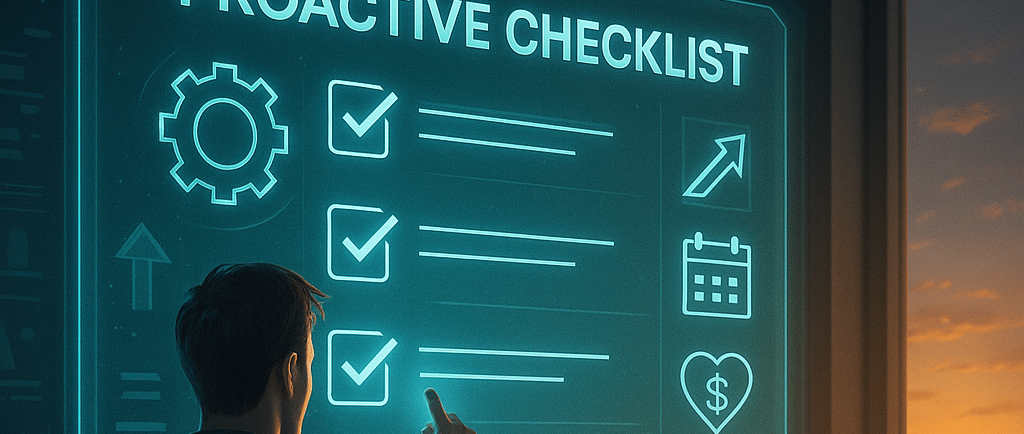4 Essential Steps to Start Being Proactive
Whether you're feeling overwhelmed, stuck in reactive patterns, or simply ready to grow - these steps will help you take back control. From mastering the pause to visualizing your best responses, you’ll learn how to turn daily stressors into intentional actions. #BeProactive #MindsetMatters #IntentionalLiving #EmotionalIntelligence #LeadershipMindset #StephenCovey #SelfMastery #HighPerformanceHabits #PersonalGrowthJourney #ProductivityTools #MentalRehearsal #GrowthMindset #LifeByDesign
RESOURCESACTION


6/27/25
4 Essential Steps to Start Being Proactive
Whether you're overwhelmed, reactive, or just ready to take ownership of your life, these four steps will help you build the mindset of proactivity. Take some time each day to practice these and strengthen your proactive muscles.
1. Pause and Own the Space Between Stimulus and Response
“Between stimulus and response is our greatest power - the freedom to choose.” – Stephen Covey
Every proactive choice begins with a pause.
When something triggers you: a delay, a rude comment, a stressful moment - pause before reacting. That pause gives you power. It gives you the space and the time you need so that you don’t just react. It allows you to actively choose how you want to respond so that you can act with intention instead of emotion.
Try this:
When you feel triggered, take a deep breath. breathe out slowly, clear your mind and then ask: "What response aligns with the person I want to become?"
2. Start Each Day With Intention
“Begin with the end in mind.”
Proactivity starts with clarity of purpose. Spend just 5–10 minutes each morning visualizing the person you want to be and how you want to show up.
Set one to three intentional, proactive actions - not just things to do, but ways to respond:
“Stay calm in the meeting.”
“Reach out, even if they don’t.”
“Focus on impact, not perfection.”
Tool: Write this daily:
"Today, I choose to respond with ____, instead of react with ____."
3. Focus on Your Circle of Influence
“Proactive people focus their efforts on the things they can do something about.”
Stop spending energy on things you can’t control (traffic, politics, other people’s opinions).
Instead, invest in what you can control:
Your attitude
Your preparation
Your schedule
Your tone and words
Ask this often:
"Am I focused on my circle of influence - or caught in my circle of concern?"
4. Visualize Challenges Before They Happen (Mental Rehearsal)
Proactive people prepare before the moment arrives. Mentally rehearse your day - imagine potential stress points and how you’ll respond with calm and strength.
If you know traffic, criticism, or a tough meeting is coming, prepare for them and visualize yourself handling them with clarity and poise. This trains your nervous system to respond proactively.
Why it works:
Your brain treats visualization like real experience. You’re building a proactive blueprint.
Summary – The Daily Proactive Mindset
Pause before reacting
Set your tone and priorities each morning
Focus on what’s in your power
Rehearse your best responses before the pressure hits
Start small. Stay conscious. Keep choosing who you want to be.
That’s how proactivity becomes a way of life.
